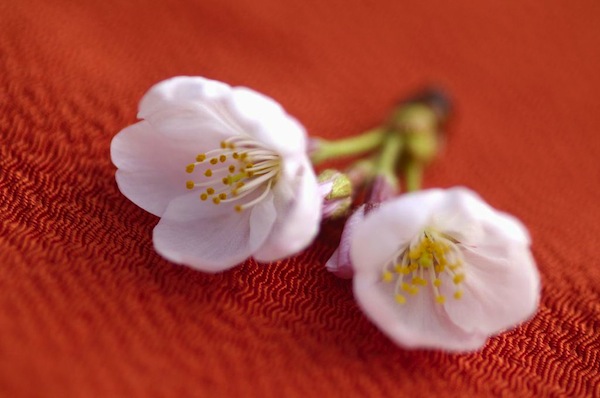 Kake-eri/Tomo-eri
Kake-eri/Tomo-eri
The center part of eri (collar) is double-layered. The fabric that overs the collar is called tomo-eri or kake-eri. In general, it is called tomo-eri when it is made using the same fabric as kimono, and it is called kake-eri when it is made using fabrics from others. However, the given name is not fixed as it can be called kake-eri even when the same fabrics from kimono are used. You may consider that they both have the same meaning. Damages and stains are more likely to appear particularly around eri. Kake-eri is used over the collar so it can be removed to wash separately or replaced with another.
When you watch a period drama, you often see ladies wearing kimono with only their collars that are black. That black fabric is kake-eri. Back then, it was popular to use black kake-eri so stains on collars were not noticeable.
Originally, kake-eri are to be used over normal collars. But to reduce costs, there are some which are just folded so they look like kake-eri are actually covered.
Also, when extra fabrics are added to the sleeves of kimono for larger people, there is no choice but to just fold the collars as kake-eri cannot be removed.
Collars of this sort of kimono cannot be re-patched, but there isn’t any problem wearing it.
